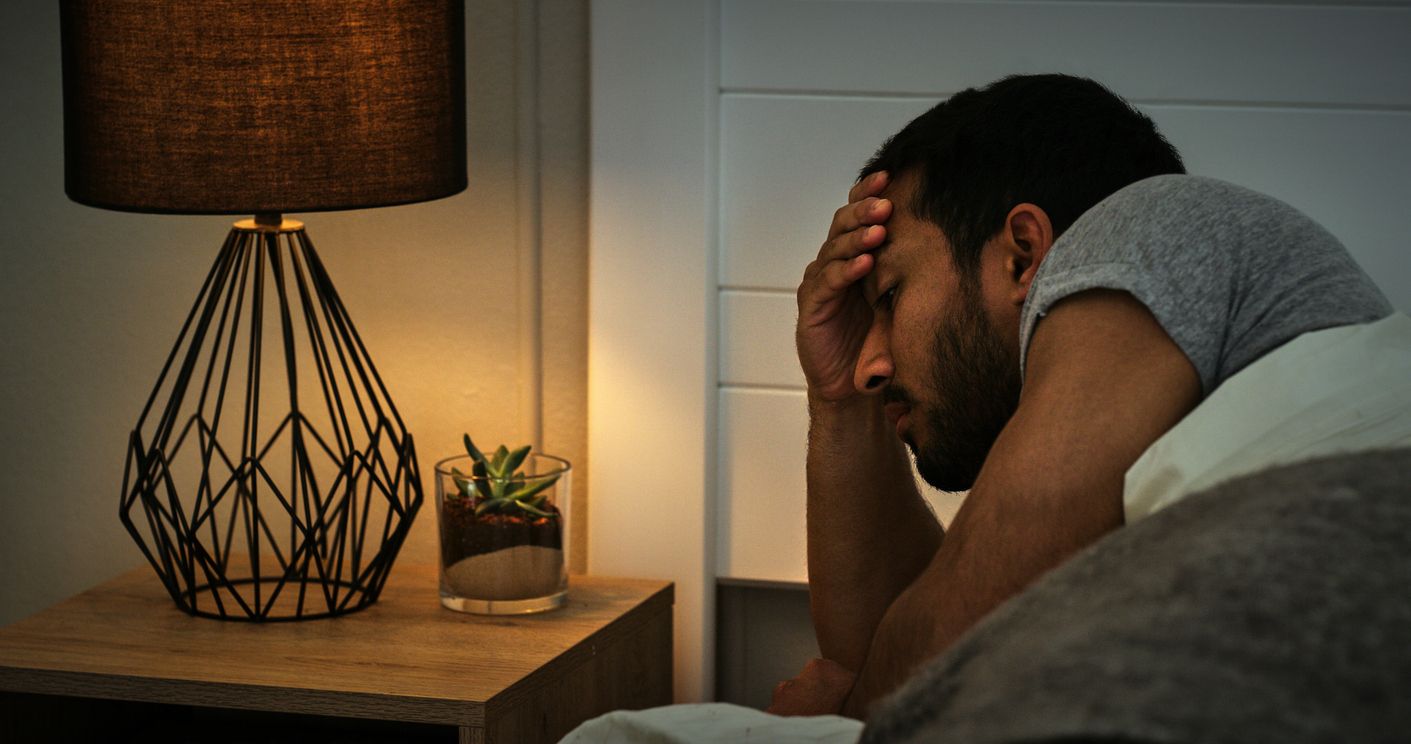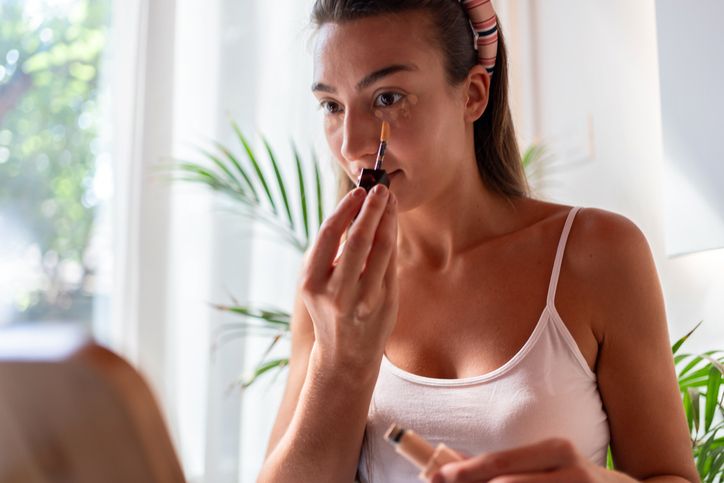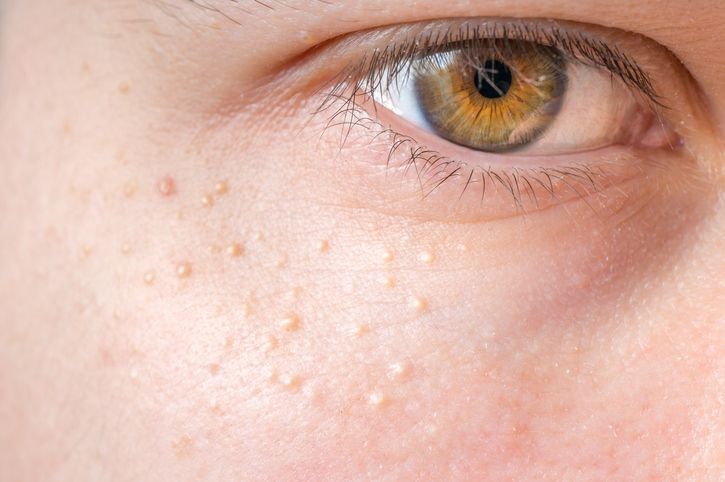- Home
- Trend
- Weight Loss Strategies
- Acne Tips
- Hair Health Information
- Blemish Removal Tips
- Acne Scar Removal Tips
- Muscle Building Techniques
- Intimate Care Tips
- Postpartum Intimate Care
- Eye Bags Wiki
- Tips for Face Slimming
- Secret of Permanent Hair Removal
- Breast Enlargement Tips
- Cure to Snoring
- Marionette Lines
- Skin-Tightening Secrets
Sleep apnea is a common but serious sleep disorder that affects millions of people worldwide. It is characterised by repeated interruptions in breathing during sleep, which can lead to fragmented sleep and various health complications.
Types of Sleep Apnea: A Closer Look at OSA, CSA, and Mixed Sleep Apnea

Sleep apnea is a serious sleep disorder characterised by repeated interruptions in breathing during sleep. These interruptions, or apneas, can lead to fragmented sleep, reduced oxygen levels in the blood, and various health complications.
Sleep apnea is categorised into three main types: obstructive sleep apnea (OSA), central sleep apnea (CSA), and mixed sleep apnea. Each type has distinct causes, symptoms, and treatment approaches, making it essential to understand the differences for accurate diagnosis and effective management.
1. Obstructive Sleep Apnea (OSA)
Obstructive sleep apnea (OSA) is the most prevalent type of sleep apnea, affecting millions of people worldwide. OSA occurs when the muscles at the back of the throat relax excessively during sleep. This relaxation causes the soft tissues, including the tongue, uvula, and soft palate, to collapse and temporarily block the upper airway. As a result, airflow is reduced or completely halted, leading to periods of apnea (breathing cessation) that can last for several seconds to a minute.
Symptoms of OSA often include loud snoring, choking or gasping sounds during sleep, excessive daytime sleepiness, and frequent awakenings throughout the night. People with OSA may also experience morning headaches, dry mouth, and difficulty concentrating during the day. In severe cases, OSA can lead to significant health issues such as high blood pressure, cardiovascular disease, and an increased risk of stroke.
Risk factors for OSA include obesity, a narrow airway, enlarged tonsils or adenoids, and certain genetic factors. Lifestyle factors, such as alcohol consumption and smoking, can exacerbate the condition by further relaxing the throat muscles or increasing inflammation in the airway.
2. Central Sleep Apnea (CSA)
Central sleep apnea (CSA) is less common than OSA and differs in its underlying cause. Unlike OSA, which results from a physical blockage of the airway, CSA occurs when the brain fails to send the appropriate signals to the muscles that control breathing. This disruption in communication causes breathing to become irregular or stop entirely during sleep.
Symptoms of CSA may include episodes of apnea without the typical loud snoring seen in OSA, as well as symptoms like excessive daytime sleepiness, insomnia, and difficulty staying asleep. People with CSA may also experience a sensation of shortness of breath upon awakening, which can be distressing and contribute to sleep disturbances.
Causes of CSA are often related to other medical conditions, such as heart failure, stroke, or neurological disorders. Certain medications that affect the central nervous system, such as opioids, can also contribute to the development of CSA. Because CSA is linked to underlying health issues, its presence may indicate more severe health concerns that require comprehensive medical evaluation.
3. Mixed Sleep Apnea (Complex Sleep Apnea)
Mixed sleep apnea, also known as complex sleep apnea, is a combination of obstructive and central sleep apnea. In mixed sleep apnea, individuals experience both the physical airway obstruction characteristic of OSA and the central respiratory irregularities seen in CSA. This dual presentation can complicate diagnosis and treatment, as both components of the condition need to be addressed simultaneously.
Symptoms of mixed sleep apnea can include a combination of the symptoms seen in OSA and CSA, such as loud snoring, gasping or choking during sleep, episodes of apnea without snoring, excessive daytime sleepiness, and morning headaches. People with mixed sleep apnea may also have difficulty tolerating CPAP therapy, as the introduction of positive airway pressure can sometimes unmask or exacerbate central apneas.
Risk factors for mixed sleep apnea include the same factors associated with OSA and CSA, such as obesity, cardiovascular disease, and neurological disorders. In some cases, mixed sleep apnea may be discovered when an individual being treated for OSA continues to experience apneas despite adequate CPAP therapy, prompting further investigation into the presence of central apneas.
How is Sleep Apnea Diagnosed?
Diagnosing sleep apnea is a critical step in managing the condition and mitigating its associated health risks, such as cardiovascular disease, excessive daytime sleepiness, and high blood pressure. Proper diagnosis enables tailored treatment plans that can improve the quality of life and prevent long-term complications.
Sleep apnea is typically diagnosed through a sleep apnea test, which can be conducted either in a specialised sleep centre or at home:
1. In-Lab Sleep Study
An in-lab sleep study, also known as polysomnography, is considered the gold standard for diagnosing sleep apnea. This comprehensive test is conducted in a sleep centre or sleep lab, where patients spend the night under medical observation. The environment in a sleep lab is controlled to ensure accurate monitoring and diagnosis of sleep-related issues.
During the study, a variety of sensors are attached to the patient’s body to monitor a range of physiological parameters, providing a thorough analysis of their sleep patterns. The key elements monitored include:
• Breathing Patterns: The study tracks the patient’s breathing throughout the night to identify any episodes of apnea (complete cessation of breathing) or hypopnea (partial reduction in breathing). These interruptions in breathing are crucial indicators of obstructive sleep apnea or central sleep apnea.
• Blood Oxygen Levels: A pulse oximeter is attached to the patient’s finger or earlobe to measure the oxygen saturation in the blood. Drops in oxygen levels during sleep are a hallmark of sleep apnea, as they indicate that the body is not receiving sufficient oxygen due to disrupted breathing.
• Brain Waves: Electrodes placed on the scalp monitor brain activity to determine the different stages of sleep, from light sleep to deep sleep and REM sleep. This helps in understanding how sleep apnea affects sleep architecture and the restorative processes of sleep.
• Leg Movements: Sensors are attached to the legs to detect any involuntary movements, which can be associated with periodic limb movement disorder (PLMD), a condition that often coexists with sleep apnea and can further disrupt sleep.
• Heart Rate and Blood Pressure: Continuous monitoring of heart rate and blood pressure provides insights into the cardiovascular strain caused by sleep apnea. Episodes of apnea often lead to spikes in blood pressure and irregular heart rhythms, increasing the risk of heart disease.
The data collected during an in-lab sleep study is analysed by a sleep specialist, who uses the information to diagnose the type and severity of sleep apnea. For people with severe obstructive sleep apnea, an in-lab study is especially valuable as it offers a detailed assessment, which is crucial for developing an effective treatment plan.
2. Home Sleep Apnea Testing
Home sleep apnea testing (HSAT) is a more convenient and accessible alternative to in-lab sleep studies, allowing patients to undergo a sleep apnea test in the comfort of their own bed. This method is particularly useful for diagnosing moderate to severe obstructive sleep apnea in patients who might find it challenging to stay overnight in a sleep lab due to logistical or personal reasons.
During a home sleep apnea test, the patient is provided with a portable monitoring device that tracks key physiological parameters, similar to those measured in an in-lab study. However, home testing typically focuses on fewer metrics, often including:
• Breathing Patterns: The device monitors airflow and respiratory effort to detect episodes of apnea or hypopnea.
• Blood Oxygen Levels: A finger probe measures oxygen saturation, helping to identify drops in oxygen levels that correspond with breathing interruptions.
• Heart Rate: The device records heart rate throughout the night, providing insights into how sleep apnea impacts cardiovascular function.
The testing equipment is generally user-friendly and includes sensors that are worn on the chest, fingers, and under the nose. After the test, the data collected by the device is returned to the sleep centre for analysis by a sleep specialist. The specialist reviews the results to determine the presence and severity of sleep apnea and advises on the next steps for treatment.
While home sleep apnea testing offers the advantage of convenience and is less costly than in-lab testing, it may not be as comprehensive. HSAT may miss cases of central sleep apnea or other complex sleep disorders that require more detailed monitoring of brain activity and other parameters.
3. Additional Diagnostic Tools and Considerations
In some cases, additional diagnostic tools or follow-up tests may be required to accurately diagnose sleep apnea or to differentiate it from other sleep disorders. These may include:
• Sleep Diary: Patients may be asked to keep a sleep diary for a few weeks to record their sleep patterns, sleep duration, and any symptoms they experience. This information helps the sleep specialist to understand the patient’s sleep habits and how they might contribute to sleep apnea.
• Sleep Questionnaires: Tools like the Epworth Sleepiness Scale can help gauge the severity of daytime sleepiness and the likelihood of sleep apnea.
• Imaging Studies: In cases where structural abnormalities in the airway are suspected, imaging studies like X-rays, CT scans, or MRIs may be used to assess the nasal passages, throat, and other areas involved in breathing.
• Multiple Sleep Latency Test (MSLT): This test measures how quickly a person falls asleep in a quiet environment during the day and is often used to diagnose narcolepsy, but it can also provide additional insights into excessive daytime sleepiness related to sleep apnea.
• Blood Tests: Blood tests may be conducted to rule out other conditions that could contribute to sleep apnea or to assess the impact of sleep apnea on overall health, such as elevated blood glucose or cholesterol levels.
Early diagnosis of sleep apnea is crucial to preventing the serious health risks associated with the condition. Untreated sleep apnea can lead to high blood pressure, heart disease, stroke, diabetes, and other significant health issues. It can also impair cognitive function, increase the risk of motor vehicle accidents, and decrease overall quality of life.
免費體驗
Fotona 4D NightLase Snoring Treatment
1 Minute Self-Registration
Date should not be before minimal date
Fotona 4D NightLase Snoring Treatment for Sleep Apnea
While traditional treatments for sleep apnea, such as Continuous Positive Airway Pressure (CPAP) therapy, remain effective, innovative approaches like Fotona 4D NightLase Snoring Treatments are gaining popularity for their non-invasive nature and ability to complement existing therapies.
Fotona 4D NightLase Snoring Treatment is a non-invasive laser treatment designed to reduce the severity of obstructive sleep apnea by targeting the soft tissues at the back of the throat. The procedure involves using a laser to gently heat and tighten the tissues, which helps prevent airway collapse during sleep. By reducing the vibrations caused by snoring, NightLase therapy can significantly improve sleep quality and reduce the frequency of apnea events.
How Can Fotona 4D NightLase Snoring Treatment Help You?
• Non-Invasive: Unlike surgical treatments for sleep apnea, Fotona NightLase therapy does not require any incisions or anaesthesia. The procedure is performed in a clinic setting and typically takes less than an hour.
• Minimal Discomfort: Patients may experience a warming sensation during the treatment, but the procedure is generally well-tolerated with minimal discomfort.
• No Downtime: There is no recovery period required after Fotona NightLase therapy, allowing patients to resume their normal activities immediately.
• Complementary to CPAP: Fotona NightLase therapy can be used in conjunction with CPAP therapy to enhance treatment outcomes for individuals with moderate to severe obstructive sleep apnea.
Is Fotona Right for You?
Fotona NightLase therapy is a promising option for people who are seeking a non-invasive treatment for obstructive sleep apnea. It is particularly beneficial for those who experience discomfort or difficulty tolerating CPAP therapy.
When to See a Sleep Specialist?
If you are experiencing symptoms of sleep apnea, such as loud snoring, excessive daytime sleepiness, or frequent nighttime awakenings, it is important to seek the advice of a sleep specialist. A sleep specialist can conduct a thorough evaluation, recommend appropriate sleep apnea tests, and develop a personalised treatment plan to address your condition.
Conclusion: From Sleep Test to Sleep Intervention
Sleep apnea is a serious sleep disorder that requires prompt diagnosis and treatment to prevent long-term health complications. Whether you undergo an in-lab sleep study or a home sleep apnea test, early detection is key to managing sleep apnea effectively.
Fotona 4D NightLase Snoring Treatment offers a non-invasive solution for individuals with obstructive sleep apnea, providing an alternative or complementary treatment to traditional therapies like CPAP. If you suspect you have sleep apnea, don’t wait—schedule a consultation with us today to discuss your symptoms and explore the best treatment plan for your needs.
免費體驗
Fotona 4D NightLase Snoring Treatment
1 Minute Self-Registration
Date should not be before minimal date
FAQ

1. What are the signs that might indicate the need for a sleep apnea test?
If you experience symptoms such as frequent episodes where you stop breathing during sleep (often noticed by a partner), excessive daytime sleepiness, or difficulty maintaining a good night's sleep, you may need to undergo a sleep apnea test. These symptoms can suggest mild obstructive sleep apnea or other sleep disorders that require evaluation by a sleep specialist.
2. How can a sleep diary help in diagnosing mild sleep apnea?
A sleep diary can be a valuable tool for your health care team in diagnosing mild obstructive sleep apnea. Tracking your sleep patterns, sleep position, and any disruptions can let the sleep clinic understand your sleep problems better, and determine if a home sleep test or an overnight sleep study is necessary to confirm a diagnosis.
3. What role does a CPAP machine play in treating moderate sleep apnea?
For those diagnosed with moderate sleep apnea, a CPAP (Continuous Positive Airway Pressure) machine is often recommended. The machine maintains a constant air pressure to keep your airways open, preventing episodes where you might stop breathing during sleep.
4. Are there non-surgical treatments available for mild obstructive sleep apnea?
Yes, non-surgical treatments for mild obstructive sleep apnea include lifestyle changes such as maintaining a healthy weight, adjusting your sleep position, and using a CPAP machine or oral appliances. These options can help prevent sleep apnea from worsening. In some cases, therapy for treatment-emergent central sleep apnea may also be recommended.
5. What is a split night sleep study, and when is it used?
A split night sleep study is a type of overnight sleep study that is often used when sleep apnea is strongly suspected. In the first part of the night, the patient's sleep stages are monitored to confirm the presence of sleep apnea. If the diagnosis is made early, the second part of the night involves using a CPAP machine to determine the appropriate air pressure needed to treat the condition.








